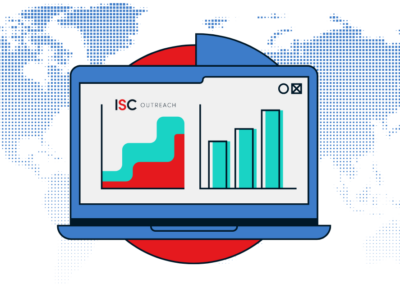It’s been quite incredible, the interest and reaction from educators and education partners to our wellbeing report and webinar. COVID-19 has, without doubt, raised the status of wellbeing to a new level for many.
Our webinar panellists have given their expert feedback to many of the questions asked during our recent wellbeing webinar, and we share their responses here:
When we are talking of wellbeing, I believe cyber security and digital screen time management is a very important aspect. What does the panel think?
Adrian Bethune says: I agree and there is a focus on ‘digital wellbeing’ as part of the Oxford International Curriculum where students explore how to look after themselves (and each other) on and offline.
And Dr Helen Kelly says: I feel that social media is a factor in poor mental health and wellbeing for some. However, my approach has always been to educate students, or have them educate each other, to understand the pros and cons of technology so that they are able to modify their own behaviour. I do not support an adult-led approach as I feel it has little impact.
Do you have dedicated well-being leads in your schools or how/who takes the responsibility of well-being?
Adrian Bethune answers: Yes, I am a wellbeing lead at my school and also the wellbeing lead governor. We have a staff wellbeing team – it’s really important that wellbeing is everyone’s responsibility and more than one person leads on this important area.
Have you noticed or measured any changes or improvements in the school/staff/students when you have implemented something?
Dr Angie Wigford says: I would suggest that best practice is to get baseline measures: any changes that are implemented can then be evaluated. For example, our wellbeing committee identified two areas of the school where staff could go to relax: one outside and one inside. These areas were developed with a small budget for seating (including a massage chair) and advertised to staff. They were previously not used at all. Gradually usage has increased and next term we will monitor how many times each area is used over the course of a week to get an idea of impact. From my observations it has been beneficial for several staff.
Adrian Bethune adds: We measure wellbeing to track changes in student and staff wellbeing over time. I wrote a blog about where you might begin with measuring wellbeing. You can read it here
And Dr Helen Kelly explains: We began an intentional focus on staff wellbeing at my previous school in 2016. In the Lower School where I was Principal we developed a range of approaches, over a period of three years, including:
- Use of PERMAH Wellbeing survey and PERMAH framework
- A focus at SLT level on putting staff wellbeing at the forefront of our leadership practice. Our mantra was: people work is the real work. All SLT weekly meetings started with a discussion of the wellbeing of each team and individuals who might need additional support. We used the key elements of Brene Brown’s Dare to Lead to inform out approaches to leadership.
- Increased the focus on developing the Middle Leadership Team. This included delivery of training over two years to support the development of more effective and cohesive teams with a focus on improving collaboration and building a sense of belonging, and scheduled Middle Leader Half Days for delivery of wellbeing training
- Use of the DISC personality profiling with all staff to enable them to better understand themselves and others
- Use VIA strengths survey with all staff
- Use of Appreciative Inquiry to identify what was working well and how this could be built upon
- Improving staff appraisal to ensure it was a collaborative process supporting the development of each individual
- Development of initiatives such as WeShare and the Wellness Hour to bring staff together to share good classroom practice and socialise
Although we did not implement any formal instruments to measure our progress, there was a significant improvement in social cohesion and sense of belonging and a huge amount of positive feedback from staff.
Do any of your schools use a wellbeing management platform for tracking and monitoring wellbeing?
Dr Helen Kelly answers: I am currently developing a comprehensive wellbeing tracker for international schools in collaboration with School Improvement Tracker, a UK based company. It will be launched in early August. Feel free to contact me if you wish to know more.
And Adrian Bethune says: At my school we use a tool called BounceTogether to measure and analyse wellbeing of pupils and staff.
This is a fantastic wellbeing panel; lots of practical suggestions and advice! Could the panellists suggest a roadmap for school leaders interested in developing a systematic whole school wellbeing programme – where to begin? Should we start with surveys followed by policy and implementation plan?
Dr Helen Kelly says: You can read my article on this where I outline a systematic approach. Also read about my thoughts on staff wellbeing policies and pitfalls to avoid here.
And Dr Angie Wigford says: There is a wellbeing award for schools from Optimus Education (who worked with the National Children’s bureau in the UK on this) which provides guidance and structure. Dover Court International School has signed up to this and we feel that it is a helpful tool to drive and support this agenda. It will also protect against personnel change which can be one of the barriers to a sustainable wellbeing approach in international schools.
Are there agencies that offer leadership coaching?
Dr Helen Kelly says: I offer leadership coaching but I can also recommend other agencies if you contact me.
Rami and Helen both mentioned use of surveys. Can I ask for what instruments are used in schools for wellbeing?
Dr Helen Kelly says: I think ideally a comprehensive wellbeing survey should be tailor-made to the needs of the school or at least be designed for use with international schools which have very unique needs. I have developed a staff wellbeing survey for use in international schools that schools can licence. You can contact me about this if you are interested but there are also many other general surveys out there that you can use that have been recommended here.
And Dr Angie Wigford says: I always caution about the use of surveys as there are several inherent risks which must be taken into consideration when planning any response based on one. An off the shelf survey is generic and therefore may miss key issues which are specific to a school or situation. They are generally closed questions and therefore you only get the answers to the questions that are asked. Of course the advantage is that they are usually easy to analyse and can be used again to measure change.
As always you need to know what you are looking for and what you mean by wellbeing. There is an approach by the Anna Freud Centre Five Steps to Mental Health and Wellbeing which is worth looking at.
Because of online learning, the gap between teacher and student is bigger. How can we ensure the wellbeing of our students when we are completely remote with no signs of in-person classes until August 2021? What tips or activities can you suggest to help our students?
Dr Angie Wigford says: Maintaining contact and developing communication is key to this. Regular individual check-ins and group fun activities can be helpful. Reach out to students who are not responding online, make sure that they know that you are there for them when they are ready. It is all about connections. Putting groups of students into chat rooms on Zoom can be very popular. Mix them up so they get to talk to peers they might not normally talk to, and give them fun tasks.
What is worse for the mental health of students, being completely remote or shifting back and forth (in-person then remote) when cases arise?
Dr Angie Wigford says: I don’t think we have enough evidence for this. I do think that we need to acknowledge that transitions can be highly stressful and disruptive so ideally should be minimised. Having said that, in terms of most students and staff, wellbeing face-to-face is better from a social point of view. Some students (particularly neurodiverse and Autistic) appear to do better remotely.
Hi Adrian, I’m really interested in reading the study you referenced about wellbeing at age 16 being a strong predictor for life satisfaction in adulthood. Could you send us a link?
Adrian Bethune answers: Here is a link to the feature: What predicts a successful life? A Life-course model of wellbeing and there is more detail in the book The Origins of Happiness too.
Adrian Bethune mentioned the 4-stage model for wellbeing. May I ask which programme this is from – is it the same, or related, to the curriculum Adrian referenced earlier by Dr Adler from University of Pennsylvania?
Adrian Bethune answers: Yes, the Adler study did something similar. Also Geelong Grammar school in Australia embed positive psychology via a similar 4 stage model that you can read about here.
In addition to responses from the panel, during the webinar there were some valuable contributions from our webinar listeners too:
- We use the AWE assessment (Assessing Wellbeing in Education), VIA Character Strengths, MTQ48 Mental Toughness assessment and we are currently buying into the Pulse app (out of Australia)
- National Online Safety is great for webinars to support colleagues and students’ mental health.
- We just signed on to NOS. It is an amazing resource.
- Panorama Wellbeing surveys G3-12 have been great for our school.
- In our school, we use Clanbeat which is a free tool and helps us hear every student’s voice weekly and daily. We use their check ins and reflections.
- As a Safeguarding and Child Abuse Specialist and Educator, I advocate the development of a ‘Culture of Care’ which triangulates wellbeing, good pastoral care and child protection to allow adults to have a holistic view of a child. This can only be achieved if the school’s invest in the wellbeing of staff, who can be prepared to support the children. It brings in the oxygen mask theory for adults who are then able to develop positive relationships, which then ensures that children can flourish.
- Flourish – Institute of Positive Education has a good program.
- We have a Head of Positive Education and a PERMAH Leader who looks after staff wellbeing. This is in addition to counsellors, Deans, Assistant Head for Student Wellbeing, etc
- Having been a Head and Deputy Head, my wife and I recently set up a new company ASK The Head which looks to support children and staff wellbeing in schools. We use Motivational Maps which are amazing in identifying current levels of motivation and then finding ways to maintain or raise it.
- We are member of Safe Passage Across Networks (SPAN) that Rami referred to.
- My school has conducted research among parents, staff and students measuring different areas. We have 3 counsellors, SLT members, director, Sunshine Committee. Everyone is equally responsible. They organise different actives for staff – yoga, biking, trips, cycling, cooking, gaming, quiz nights, movie nights etc. We also have group counselling and individual counselling offered to our staff and we have a wellness allowance.
- We have a wellbeing team in place with regular schoolwide training for staff (cognitive coaching, mentoring, mindfulness). Our wellbeing lead is supported by SLT and our school counsellor. Our students have the ability to lead activities, interactions, assemblies and open access to teachers and leadership to ensure student voice is developed as part of the school culture.
- Our school used this article The challenge of defining wellbeing to create our own wellbeing definition.
- I used the PERMAH survey with my staff when I was a principal. It does have a specific focus and doesn’t provide a full range of information about areas like workload and emotional demands of the roles. There are a lot of surveys out but I think the best way is to develop surveys based on your school’s context.
- Dr Lindorff’s most recent impact study does a good job of showing the strength and limitations of some of the evidence she looked at including Adler’s study.
You can access a full recording of the ISC Research wellbeing webinar here and get your free copy of the wellbeing report here.
ISC Research would like to thank Dr Angie Wigford, Dr Helen Kelly, Adrian Bethune and also Rami Madani for such expert support.



